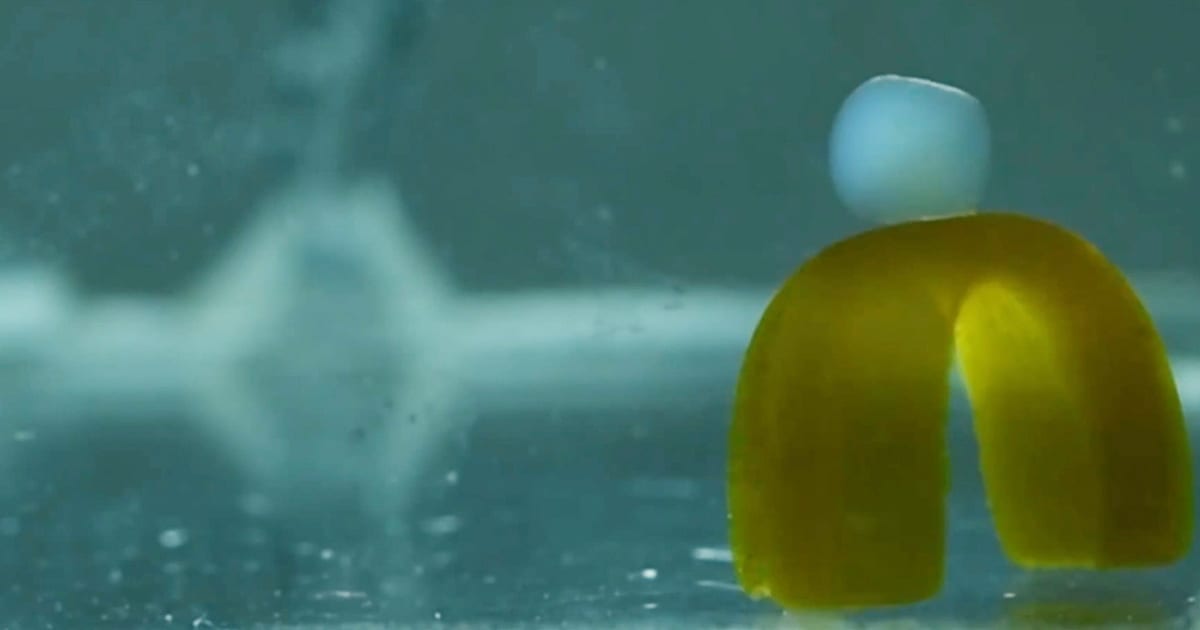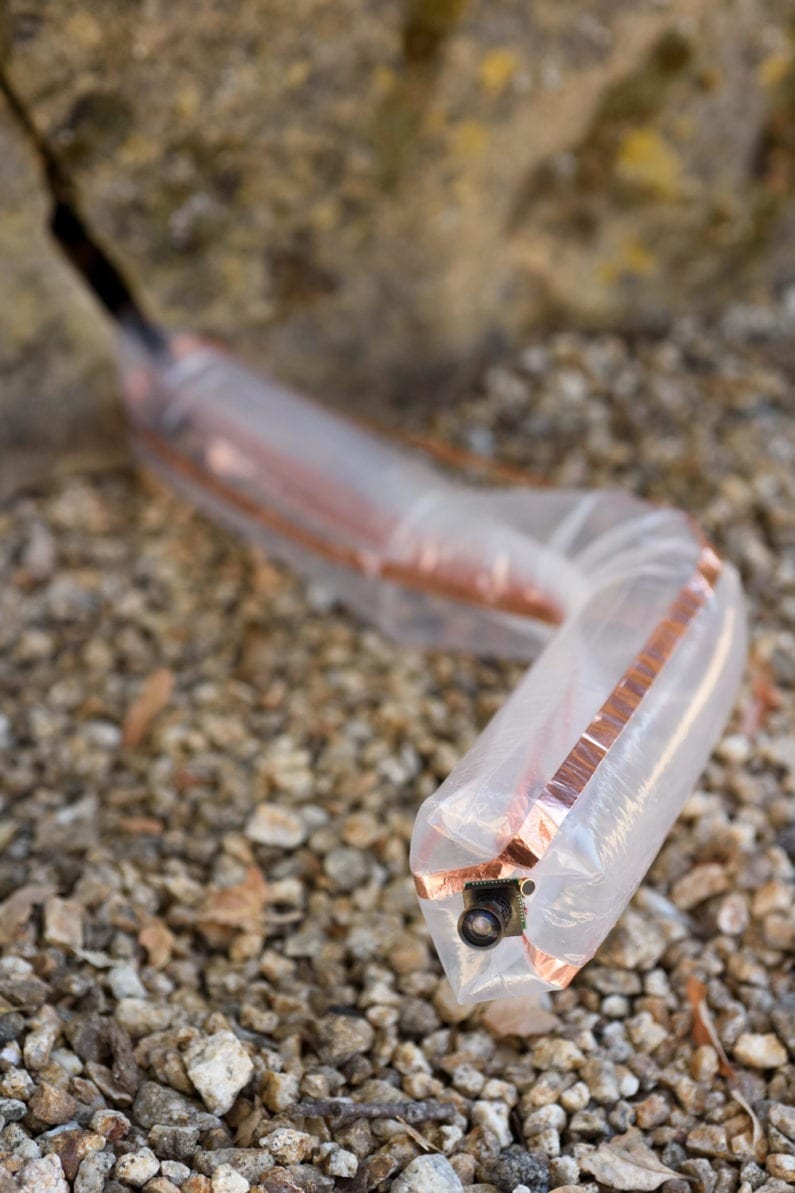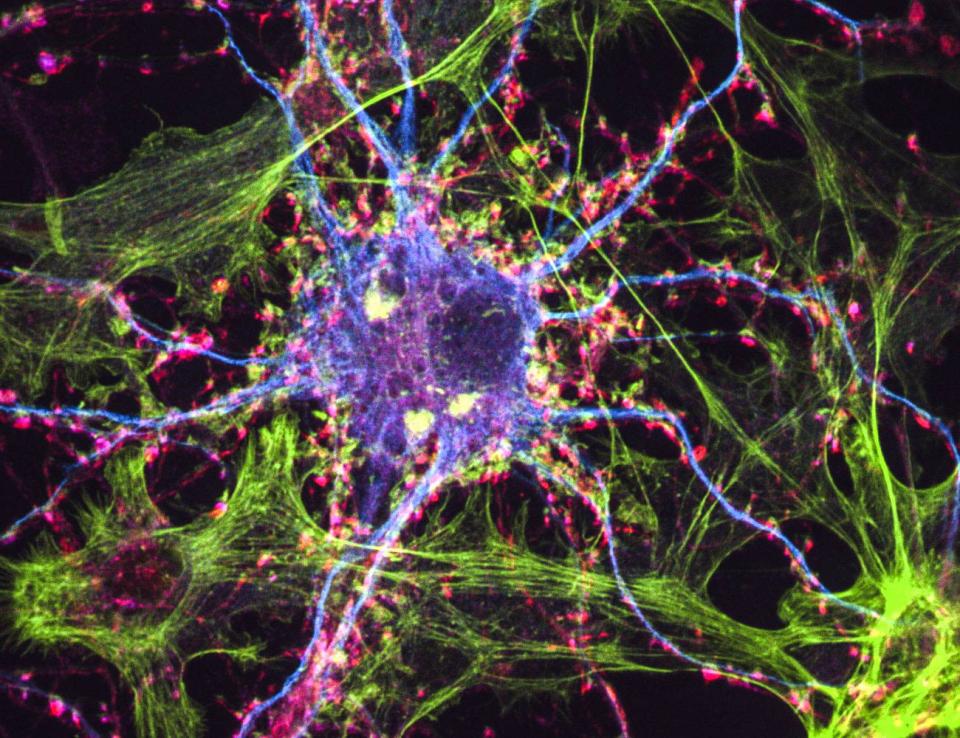
Aquatic robot inspired by sea creatures walks, rolls, transports cargo
Aquatic robot inspired by sea creatures walks, rolls, transports cargo
Soft material is powered by light and rotating magnetic fields
Northwestern University researchers have developed a first-of-its-kind life-like material that acts as a soft robot. It can walk at human speed, pick up and transport cargo to a new location, climb up hills and even break-dance to release a particle.
Nearly 90% water by weight, the centimeter-sized robot moves without complex hardware, hydraulics or electricity. Instead, it is activated by light and walks in the direction of an external rotating magnetic field.
Resembling a four-legged octopus, the robot functions inside a water-filled tank, making it ideal for use in aquatic environments. The researchers imagine customizing the movements of miniature robots to help catalyze different chemical reactions and then pump out the valuable products. The robots also could be molecularly designed to recognize and actively remove unwanted particles in specific environments, or to use their mechanical movements and locomotion to precisely deliver bio-therapeutics or cells to specific tissues.
“Conventional robots are typically heavy machines with lots of hardware and electronics that are unable to interact safely with soft structures, including humans,” said Samuel I. Stupp, who led the experimental research. “We have designed soft materials with molecular intelligence to enable them to behave like robots of any size and perform useful functions in tiny spaces, underwater or underground.”
“By combining walking and steering motions together, we can program specific sequences of magnetic fields, which remotely operate the robot and direct it to follow paths on flat or inclined surfaces,” added Monica Olvera de la Cruz, who led the theoretical work. “This programmable feature allows us to direct the robot through narrow passages with complex routes.”
The Latest Updates from Bing News & Google News
Go deeper with Bing News on:
Soft robot
- Origami brought to life for robot exploration
Seeking more ways to move a robot through complex environments, researchers at Princeton University and North Carolina State University have turned to ...
- 'Soft robot' that can split, rejoin and crawl through mazes is unveiled
The robot can pick up cargo, transport items, crawl into hard-to-reach places and could be the future of engineering, being app ...
- Capstan Medical’s cardiac surgical robotics mission: ‘Not for the faint of heart’
Capstan Medical CEO Maggie Nixon says the surgical robotics developer is "driving hard" toward its first-in-human mitral valve replacement.
- Teaching robots to move by sketching trajectories
Getting robots to perform even a simple task requires a great deal of behind-the-scenes work. Part of the challenge is planning and executing movements, everything from turning wheels to lifting a ...
- Soft origami robot bends and twists in mazes
A soft robot that bends and twists through mazes has been developed by engineers at Princeton and North Carolina State University using origami and modern materials science.
Go deeper with Google Headlines on:
Soft robot
[google_news title=”” keyword=”soft robot” num_posts=”5″ blurb_length=”0″ show_thumb=”left”]
Go deeper with Bing News on:
Aquatic robot
- Swarm of tiny snail robots stick together to form new structures
Researchers have built a swarm of miniature, snail-inspired robots, minus all the mucus. Instead, a retractable suction cup works in tandem with the remote-controlled machine’s tank-like treads to ...
- Microrobots Swarm the Seas, Capturing Microplastics and Bacteria [Video]
Researchers have developed microrobots capable of removing microplastics and bacteria from water, addressing the dual threat of pollution and disease spread in aquatic environments. When old food ...
- Penguin-inspired robot explores sea using AI
Quadroin AUV is an underwater research robot that mimics penguins' graceful and swift swimming, descending to depths of 492 feet at speeds up to 11.5 mph.
- Penguin-inspired robot explores the sea using AI
The Quadroin AUV, inspired by penguin locomotion, is a state-of-the-art underwater robot designed for oceanic exploration and data collection.
- Action Adventure Platformer Akimbot Announced for PS5, Xbox Series X|S, and PC
Publisher PLAION and Pumpkin Jack developer Evil Raptor have announced action adventure platformer, Akimbot, for the PlayStation 5, Xbox Series X|S, and PC via Steam. It will launch in 2024. View the ...
Go deeper with Google Headlines on:
Aquatic robot
[google_news title=”” keyword=”aquatic robot” num_posts=”5″ blurb_length=”0″ show_thumb=”left”]










